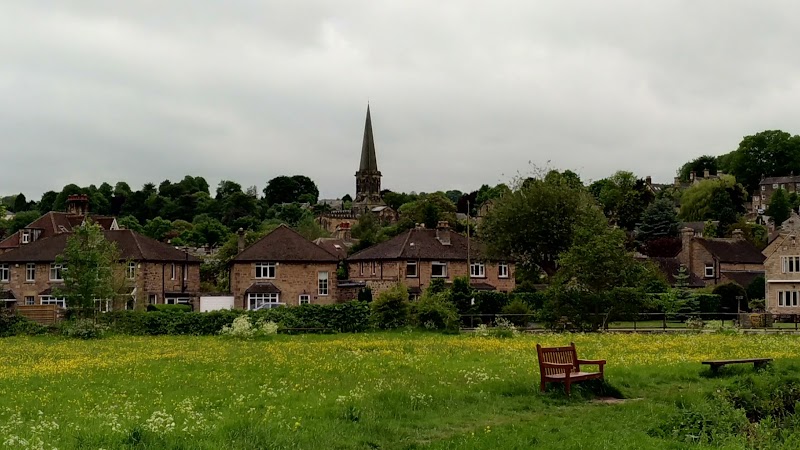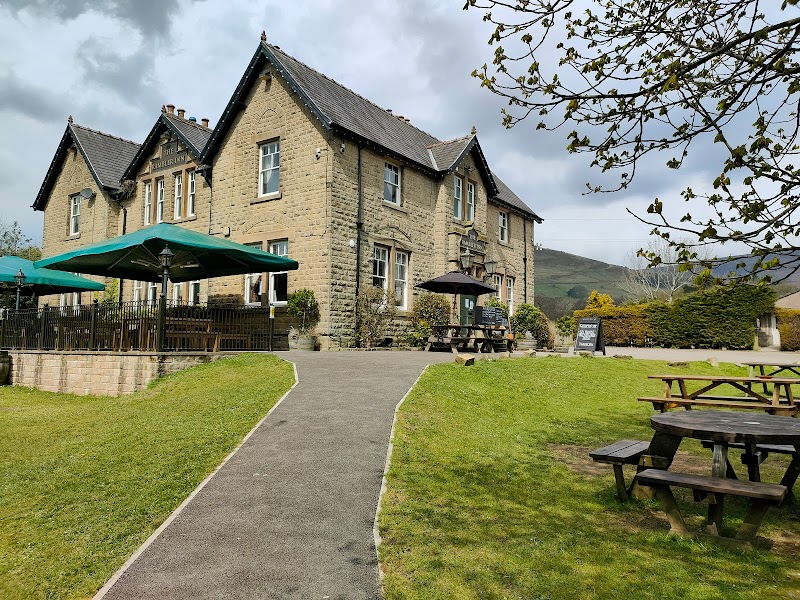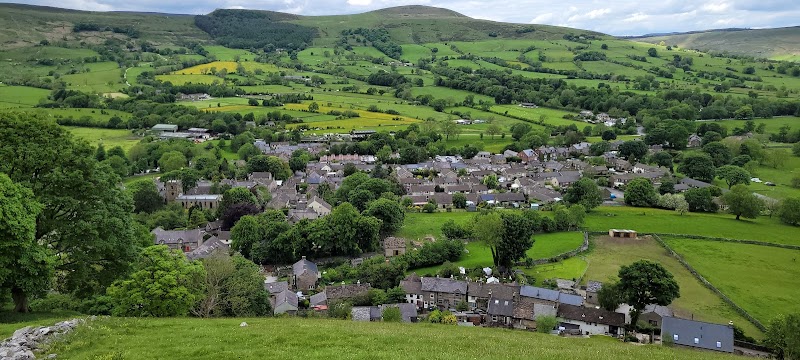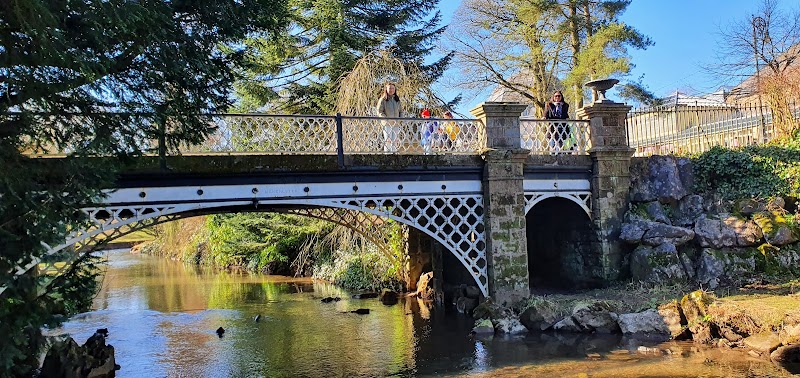Welcome to the Peak District: A Nature Lovers’ Paradise
Boasting a footfall of over 13 million tourists annually, the Peak District is a nature enthusiast's delight. Its landscapes are dotted with charming villages, ancient castles, and breathtaking panoramas. Immerse in the fresh scent of wildflowers, historical echoes of the hills, and adventures that await you at every corner.
What better way to explore this enchanting region than with a handy tourist map? Our comprehensive “Tourist Map of Peak District” lends you the perfect guide to the impressive network of trails and hidden surprises. So, buckle up for a memorable discovery journey that the map will navigate for you.
" Booking.comUnveiling the Unrivalled Charm of the Peak District
Beyond its famous trails and quaint villages, the Peak District opens a treasure trove of England’s heartland beauties. Dive into the mesmerizing limestone valleys or explore the rich heritage of its historic houses, there are countless wonders to explore. Let's set sail on a journey to discover the extraordinary offerings of this captivating locale.
Behold the Architectural Marvels
The Peak District houses some of England’s most picturesque manor houses and stately homes. Chatsworth House, a splendid baroque mansion with an exquisite collection of art and ornate gardens, stands tall as a testament to England's royal past. Its grandeur and rich history make it a must-visit. If you're interested in other charming destinations, be sure to check out the Lake District tourist map.
Experience the Surreal Beauty of the Limestone Valleys
One cannot discuss the Peak District without acknowledging its breathtaking limestone valleys. Dovedale valley's stunning beauty with its iconic stepping stones and awe-inspiring views are beyond words. Nestled nearby is Ilam Park, a perfect retreat to soak in the beauty of the lush landscape after an invigorating walk in Dovedale. For more such serene destinations, consider visiting the Eastern Midlands tourist map.
Savour Authentic Flavours of the Peak District
For culinary enthusiasts, the Peak District is a paradise. Its artisanal produce, from the savoury Bakewell Pudding to the delicious Derbyshire Oatcakes is renowned. The local farmers' markets, like Buxton's, are laden with fresh, local ingredients that truly capture the region's taste.
Peel Back the Historical Layers at Museums
Unravel the fascinating history of the Peak District at its local museums. The Peak District Lead Mining Museum offers a glimpse into the region's industrial past, while the Buxton Museum and Art Gallery blend local history, geology, and art. They are rich in historical significance and offer a deeper understanding of the region's past and its evolution over centuries. For more history-rich destinations, see the Yorkshire Dales tourist map.
Immerse in the Panoramic Views from the Peaks
For the best views, head to the peaks. Kinder Scout, the region's highest point, offers panoramic vistas of the entire Peak District that are truly awe-inspiring. It's a sight to behold, where the rolling hills meet the expansive sky, painting a picture of serene beauty.
Whether you're a history enthusiast, an outdoor lover, or a foodie, the Peak District offers a unique blend of experiences that are sure to leave you enchanted. So, gear up to explore this splendid region and let its charm captivate you!

Practical Information for the Peak District
Transportation and Mobility
Travelling the Peak District primarily depends on cars and buses. Though serviced by a few train stations, they aren't very close to many key sites. However, the local bus service, High Peak Buses, runs regular routes that cover most attractions.
For those who prefer the freedom of self-driving, car rental services are widely available in nearby larger towns like Sheffield and Derby. However, bear in mind that some rural roads can be narrow and winding, especially in winter.
Schedules and Prices
Most attractions in the Peak District are open all year round, but operating hours can vary seasonally. It's always a good idea to check the official websites for the most up-to-date information.
While many natural sites in the Peak District are free to explore, some attractions and facilities may charge an entry fee, typically ranging from £5 to £15 per adult. Special events and activities may carry additional costs.
Safety Tips
When embarking on outdoor activities in the Peak District, it's important to be prepared. The weather can change rapidly, so always carry waterproof clothing, even in summer. Remember to inform someone of your route if you plan to hike in less populated areas.
While wildlife encounters are generally safe, maintain a respectful distance from animals, particularly during the breeding season. Sheep and cattle roam freely in many areas, so make sure to close gates behind you.
Practical Recommendations
The Peak District is a year-round destination, but certain times offer unique experiences. Spring brings blooming wildflowers, while autumn offers stunning foliage. Winter can be quite beautiful with snow-capped peaks, but some areas might be inaccessible due to weather conditions.
Plan your visit during weekdays or outside of school holidays to avoid crowds, particularly at popular sites. And don't forget to try local delicacies like Bakewell Pudding and Derbyshire Oatcakes!

Frequently Asked Questions about the Peak District
We answer some of the unique and specific queries about travelling to the Peak District. Whether you're wondering about local customs, unique experiences, or lesser-known attractions, we've got you covered.
1. Are there any local festivals or events I should consider when planning my visit to the Peak District?
The Peak District hosts an array of fascinating events and festivals throughout the year, each offering a unique insight into local culture. The Buxton Festival, held in July, is a summer celebration of opera, music, and literature. Meanwhile, the Bakewell Show, one of the oldest agricultural events in the UK, takes place in August.
2. I'm a rock-climbing enthusiast. Does the Peak District offer any opportunities for this?
Absolutely! The Peak District is a haven for rock climbing enthusiasts, offering numerous crags and cliffs that cater to all skill levels. Stanage Edge, one of the most famous climbing locations in the UK, is definitely worth a visit.
3. Can I go wild camping in the Peak District?
While wild camping is not officially permitted in most parts of the Peak District, overnight stays in the high moorland areas away from populated places are generally tolerated as long as campers follow the Leave No Trace principles.
4. Are there any particular customs or traditions I should be aware of when visiting the Peak District?
In the Peak District, you'll find that local traditions are strongly linked to the farming calendar and the changing seasons. One such tradition is Well Dressing, a unique custom of decorating springs and wells with intricate designs made from flower petals.
5. Is the Peak District a good destination for bird watching?
Yes, indeed! The Peak District is home to a rich variety of bird species, making it a fantastic destination for birdwatchers. The diverse habitats of moorlands, dales, and woodlands attract species like the ring ouzel, curlew, and the rare short-eared owl.
6. Are there any particular local crafts or souvenirs I should look out for in the Peak District?
The Peak District is renowned for its local crafts, especially pottery, jewelry, and textile products. You might want to visit the village of Hartington, known for its traditional cheese-making. A piece of locally made Blue Stilton or Peakland White could be the perfect souvenir to take home.


